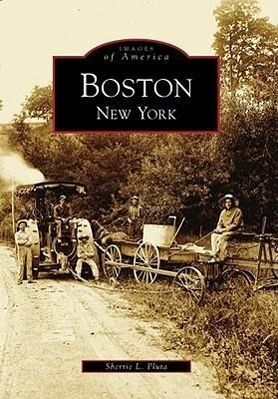
Boston, New York
Versandkostenfrei!
Nicht lieferbar
In 1803, when Charles Johnson and his brother Oliver left their family in Cayuga County to move west to the Boston Valley, they brought their pioneer spirit and strength with them to an untouched wilderness. The valley was a serene meadow, and the hills surrounding it were perfect for farming and raising cattle and sheep. As others came with their families, the wilderness became tame, and the town grew as the community built harness shops, cheese factories, sawmills, and schools. In the years that followed, the town experienced both tragic and joyous events. From John Love's murder in 1824, th...
In 1803, when Charles Johnson and his brother Oliver left their family in Cayuga County to move west to the Boston Valley, they brought their pioneer spirit and strength with them to an untouched wilderness. The valley was a serene meadow, and the hills surrounding it were perfect for farming and raising cattle and sheep. As others came with their families, the wilderness became tame, and the town grew as the community built harness shops, cheese factories, sawmills, and schools. In the years that followed, the town experienced both tragic and joyous events. From John Love's murder in 1824, through a typhoid epidemic in 1840, the birth of a world-famous opera singer in 1868, the construction in 1903 of the Buffalo and Susquehanna Railroad through town, the genesis of the Boston Telephone Company in 1904, the emergence of the town's many churches, and the building of three fire companies, Boston shaped itself into the town it is today.




